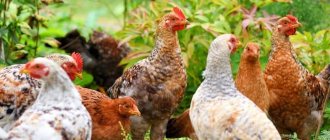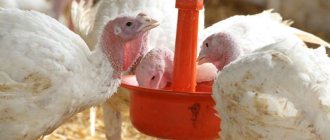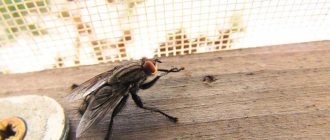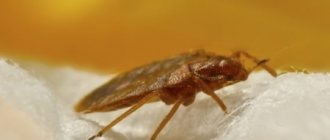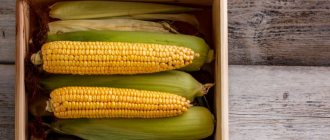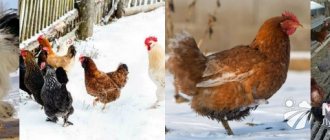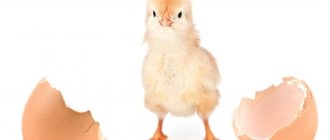Chickens are not very demanding birds when it comes to feeding. Every owner is interested in ensuring that the birds grow healthy and resistant to diseases and climate changes and do not reduce egg production at any time of the year.
Therefore, in addition to grain crops and a variety of mixed feeds, chickens should have greens in their diet. In the summer, they themselves will find foods rich in proteins and vitamins in the ground. In the autumn-winter season, it is necessary to add green mass to the main diet.
The most suitable product, rich not only in vitamins, but also in proteins, carbohydrates and a whole range of macro- and microelements, so necessary for both adult laying hens and chickens, is common nettle, which grows everywhere. Therefore, in order to provide balanced nutrition to feathered pets, it is necessary to timely prepare nettles for the winter for chickens.
How to give nettles to chickens
Benefits of nettle
Greens allow you not only to diversify the diet of broiler chickens, but also to save on expensive mineral and vitamin supplements.
It contains a whole complex of substances that have a positive effect on both the immune system and digestion.
Important! The younger the nettle, the more vitamins it contains. Therefore, be careful when collecting raw materials
Broiler chicken is characterized by problems with bones, since weight gain occurs several times faster than the formation of bones and tendons. Because of this, every 2-3 chickens suffer from problems with the musculoskeletal system.
The plant contains calcium, phosphorus and potassium, which strengthen the bones and also contribute to its full development.
It also contains a relatively large amount of protein, while there is practically no fat. This allows not only to saturate the chickens’ body with vitamins and minerals, but also to increase the total calorie content of the diet.
List of useful herbs in winter
Fresh and green grass for chickens, especially in winter, is a very important component of the food chain. Juicy, green grass leaves, especially those we have listed above, completely enrich the body of poultry with minerals, protein and essential vitamins. Therefore, especially for you, we have compiled a table of some herbs useful for chickens in winter.
| Herb name | Groups of vitamins | Beneficial features |
| Woodlice or chickweed | Provitamin A, vitamins E, B1 and B2, iodine, magnesium. | Normalizes metabolism, reduces the development of pathologies, strengthens the immune system. |
| Clover | A and S. | Normalizes the digestive system and has anti-inflammatory properties. |
| Plantain | A, B and C, protein, potassium, phosphorus, calcium. | Has bactericidal and anti-inflammatory properties. |
| Spurge | B, A, C, E. | Prevention of worms, strengthening the immune system and improving the digestive system. |
What grass can you give to chickens?
The basis of the green diet is vegetable tops and weeds from the garden; they also use freshly cut grass, but in this case they monitor the presence of poisonous species found in the forbs. It is best to feed grains and legumes:
Alfalfa and clover have beneficial properties; they can be sown directly in the walking aviary as a lawn, then the birds will receive greenery from the first days of spring. Sorrel and nettle are not left out (they are scalded with boiling water); they are rich in vitamin C. Amaranth and herbs strengthen the body as a whole.
Chickens love these herbs:
Alfalfa strengthens the eyesight of birds, wheat germ improves egg production by nourishing the body with vitamin E, and yarrow and tansy are the best remedies for helminths. For good health, chickens are given quinoa, horse sorrel, pine needles, woodlice, spurge, garden crops, as well as aromatic herbs (parsley, dill, onions, beet and carrot tops).
Recommendations for increasing egg production
The best system for keeping laying hens is free range, in which the birds roam freely outside during daylight hours. Such chickens lay eggs better and are healthier. Thanks to free range, chicken feed costs can be reduced by up to 40%, provided good pasture with fresh grass is available as a nutritional supplement to the main diet.
Feeds that promote egg production:
- Proper nutrition of laying hens takes into account their physiological needs, body weight, level of egg production, and temperature in the chicken coop. The balance of proteins, calories, amino acids, vitamins and minerals greatly affects egg weight, shell quality, bird health and egg production. The quality of the egg itself is not too dependent on nutrition, because all the ingredients that make it up come from the chicken. For example, if there is too little calcium in chicken feed, it will have more of an impact on the health of the bird's skeletal system and less on the composition of the shell.
- Along with chicken age, calcium intake also changes, so the content of this substance in the feed mixture should increase as the laying weeks progress. Chickens lay eggs at intervals of 6–8 weeks, after which there is a pause, so the calcium content in food increases already in the 4th week of laying.
- Complete poultry mixtures contain grains (wheat, corn, barley). There are also by-products of grain processing, extracted flour (soybean, rapeseed, sunflower), legume seeds, animal products and zootechnical additives (feed chalk, coccidiostats, synthetic amino acids).
Did you know? The color of a chicken egg is determined by the breed of the chicken and the color of its ears. A hen with red earlobes lays brown eggs, while a hen with white earlobes lays white eggs. The color of chicken feathers has nothing to do with the color of eggshells.
Optimal maintenance of laying hens:
- Maintaining high productivity of laying hens can be achieved by extending daylight hours using artificial additional lighting in the room. Lighting in a chicken coop can be natural or artificial. Windows provide natural light in the coop. In chicken coops where there is no access to a natural light source or the windows are too small, light bulbs can be used to illuminate the room for up to 16 hours a day. Laying hens should be provided with conditions as close as possible to natural ones, i.e. chickens need to sleep at night, so the lights are turned off at night. In chicken coops, you can also periodically turn on ultraviolet light to disinfect nests and for preventive purposes.
- In home (backyard) conditions, no more than 6 laying hens can live per 1 m² of chicken coop. The area of a farm poultry house cannot exceed 1600 m², since the number of birds significantly affects the microclimate prevailing in the chicken coop.
- The most optimal temperature throughout the year in the room for laying hens should be in the range of +21...+23°C, and relative humidity - 60–70%. In winter, it is recommended to use straw or sawdust mulch as bedding on the floor.
- Due to the high dust levels resulting from the use of mulch and loose feed in the poultry house, it is necessary to use an effective ventilation system. Air circulation is important to maintain suitable humidity, temperature and fresh air supply, as well as to actively remove toxic gases and microorganisms.
Important! Chicken manure is a valuable organic fertilizer, rich in nitrogen and other minerals. This fertilizer can be successfully used in the garden and vegetable garden for planting berries and vegetables. In order for breeding chickens to produce eggs to be profitable, the poultry farmer must know at what age it is advisable to keep laying hens
The most optimal age for a hen laying eggs is from the beginning of laying until she reaches two years of age. To ensure that the egg production of the flock does not decrease, the poultry farmer is recommended to regularly introduce young individuals into the chicken flock
In order for breeding chickens to produce eggs to be profitable, the poultry farmer must know to what age it is advisable to keep laying hens. The most optimal age for a hen laying eggs is from the beginning of laying until she reaches two years of age. To ensure that the egg production of the flock does not decrease, the poultry farmer is recommended to regularly introduce young individuals into the chicken flock.
What else can you feed chickens?
Chickens are practically omnivorous creatures, so they perfectly eat almost all leftovers from the human table, but it’s up to the poultry farmer to figure out the benefits of this or that product. Most often, birds are given the following food.
Bread
Many poultry farmers actually include this product in their chicken menu, but in reality it is not as harmless as it might seem. For example, a lot of salt and yeast are added to black bread, which can provoke fermentation in the bird’s stomach, and it is not recommended to give fresh bread at all, since when it absorbs moisture, it quickly swells and forms a dense lump in the crop that is constantly increasing in size. If the problem is not resolved in a timely manner, the bird may die.
For good egg production of chickens, the correct diet plays a very important role. Find out how much feed a laying hen should be given per day, what vitamins will help increase egg production, and whether it is possible to increase the egg production of chickens in winter.
It turns out that the best option would be to introduce “white” crackers into the diet, which are soaked in water before being directly given to the birds. Dried bread lasts longer and makes it much easier for birds to peck at the crumbs. As for the quantity, white dried products should not take up more than 40% of the total amount of food in the birds’ diet, and black bread can be given only once a week and then in small quantities.
Important! Whatever bread you use, there should be no mold on it, otherwise it will be impossible to guarantee high egg production of chickens and their well-being.
Fish
Most chickens really like the fish, and they happily eat it in chopped form. This is a good source of calcium and phosphorus, which will be especially useful for young chickens during the period of strengthening their skeletal bones and for laying hens that are deprived of many nutrients along with the eggs they lay. You can give fish no more than several times a week, and, of course, it should not be salted or smoked foods. To make it easier for the bird to cope with such food, it is recommended to boil it until the bones are completely softened, and then grind it until smooth and mix it with the main food. However, you should not feed your birds fish too often; 1-2 times a week using 100-150 g of product mixed with the feed mixture will be enough.
Potato
Potatoes are one of the most common foods in the diet of poultry. It goes well with a variety of types of food, quickly saturates the body of chickens and is always available for feeding. An excellent option would be to mix boiled potatoes with grain mixtures, but it is not advisable to give raw vegetables to birds in order to avoid possible solanine poisoning. This substance is collected in large quantities in the skin of potatoes and can have a detrimental effect on the digestive system of birds if the potatoes have not undergone proper heat treatment before delivery.
Important! Under no circumstances should you give birds water left after boiling young potatoes; it is in it that most of the solanine mentioned remains.
Feeding chickens with potatoes can begin as early as the third week of life, first introducing 100 g of the product into their diet, and then increasing its share to 200–300 g at one time.
Beans
Legumes (beans, beans, lentils) contain a lot of protein that is useful for chickens, as well as many important amino acids, which together determine the high nutritional value of such products. Beans will be especially useful for meat chickens, as they contribute to rapid weight gain.
Do not feed chickens from bowls or from the ground. We recommend making feeders for poultry: a hopper feeder, an automatic feeder, or a feeder made of PVC pipes.
For better absorption by the poultry stomach, before distribution, all varieties must undergo heat treatment (they are boiled on the stove for 30–40 minutes), with preliminary soaking. Starting from 4 weeks of age, the share of broad beans in the diet of young animals can be no more than 5%, and with age this value increases to 8–17%, giving beans no more than once a week.
Peas
Like other legumes, peas are an excellent source of protein and are well suited to somehow diversify a chicken's usual menu. As in other cases, they begin to introduce it into the diet in small portions and only in boiled form. With age, boiled food can gradually be replaced with dry, chopped peas, adding it to other foods.
If you believe the reviews, then peas help increase egg production. On average, it is enough to give it to the bird once every 7 days in the amount of 200–300 g, divided into several doses.
Did you know? Properly dried peas can be stored for 10–12 years without losing their nutritional properties.
How to prepare nettles for the winter for chickens
Nettle harvesting is carried out in the summer from June to August. The plant is torn along with the stems. Nettles are tied into small bunches and then dried by hanging under a roof under a shed, in a barn or attic. The room should be dry and well ventilated, without direct sunlight.
Green nettle preparations are placed in rag bags for winter storage and stored in a dry place.
Mealworms
Perhaps this is the most favorite of all delicacies for chickens! Mealworms are highly nutritious and contain over 50% pure protein.
For him they are ready to fight tooth and nail. Chickens will drop everything they are doing and come running from any corner of the garden, just so as not to miss such a pleasure.
For one chicken, 5-10 worms (or 1-2 teaspoons by volume) will be enough. They should not be given more regularly as too much protein can be bad for their kidneys.
Purchasing mealworms specifically on a regular basis can be expensive. Next time we will try to tell you how you can make your own farm for breeding mealworms and please not only your laying hens, and maybe even sell extra batches.
What is forbidden to give to chickens
There are a number of products that are not recommended to be given to chickens in large quantities, or are prohibited altogether. It is not recommended to use in bird food:
- Large amounts of vegetables - can cause digestive upset in chickens;
- Low quality fish oil - causes an unpleasant odor in eggs;
- Baking - can lead to the death of animals;
- Hard peels of fruits and vegetables are also not recommended because they are difficult for birds to digest;
- Large amounts of salt;
- Styrofoam.
Chickens can only be given bread if they are kept in a chicken coop and have room to roam. It should not be given to birds in cages.
If bread is used as an additional complementary food, it must be mixed with what the chickens usually eat - grain, mash. To fatten chickens, it is recommended to use white bread crackers.
This is interesting: Choosing cherries for Central Russia: a review of suitable varieties
How to prepare feed for laying hens?
At home, of course, it is best to prepare feed for laying hens with your own hands. It is both cheaper and easier to maintain. All food is divided into two groups: soft and hard. We consider all grain mixtures to be solid. They are prepared taking into account the number of birds for each day. To do this, various types of grain and seeds are purchased and mixed according to standards.
We include all vegetables, root vegetables, steamed grains and bran, chopped greens with the addition of flour as wet food. All this is easy to prepare with your own hands. For example, for daily feeding, you can grate vegetables or boil potatoes, add finely chopped herbs, steamed bran and season everything with cake. From grain or bone meal you can make a mash containing whey.
Here are some more tips on how to properly prepare chicken food:
- potatoes and peelings need to be boiled and mashed;
- all vegetables are grated on a coarse grater;
- The bird eats shell rock and mineral feed crushed;
- fish and meat waste, as well as from the table, cannot be fed raw;
- Young animals eat grain in flattened and ground form;
- In winter, grains can be sprouted, increasing their value and nutritional value with your own hands;
- soak the legumes and boil the beans;
- In order for chickens to lay eggs, you can use yeast - correctly 5-10 grams of yeast per 1 kg of feed.
What can chickens eat?
As you know, raising chickens is a fairly simple matter and does not cause serious trouble with care and maintenance. As a rule, choosing what to feed laying hens is also not much of a puzzle. Especially if the farmer knows well what and in what quantities chickens should eat during the day.
The number of meals rarely exceeds 4 times a day, but much depends on the appetite and general condition of the birds. The daily dose of food should be distributed as follows: in the morning one third of the entire daily norm is poured into the feeder, and two thirds are divided into the remaining meals.
There is an opinion that these birds are omnivores, and feeders for laying hens can be safely filled with any leftover scraps from your own table after eating. Experienced poultry farmers will not dispute this statement, however, they know that the main part of the laying hen’s diet during the day should be the right foods, from which the individuals’ bodies will only benefit.
The diet is usually based on feed mixtures made from grain or flour. You should not refuse to use specially balanced mixed feed; mineral supplements are also allowed. Now we are focusing on what kind of grass can be fed to chickens, so we will not talk in more detail about other types of food.
Why is natural green feed so good for chickens? The main thing is that herbs suitable for feeding birds, as a rule, contain some vitamins and useful elements. If birds eat the right herbs, this will protect them from vitamin deficiency, as well as prevent the development of many diseases associated with a lack of any substance in the body.
Fresh greens are one of the key products for maintaining vitamin balance, so their presence in the diet is not easy, but necessary throughout every day.
Diet and norms
The diet for laying hens at home also provides for a clear feeding regime and standards.
How much feed does one laying hen need per day?
The average daily requirement for laying hens of the required feed is: from 120 to 130 g of food.
But don’t forget that air temperature directly affects how much the chicken eats. If in summer the temperature begins to exceed the norm for chickens by 1 degree, they eat 1% less. In winter it’s the other way around. Therefore, in the summer, you can include less feed in the daily diet, but use varieties that contain more nutrients, based on how much feed the chicken eats.
Some farmers, in order to find out how much feed a bird needs, practice calculating the average daily requirement depending on its weight. For a bird weighing from 1.5 to 1.8 kg, the feed consumption will be about 120-125 g, and for a two-kilogram laying hen the daily ration requires 130 g.
How many times should chickens be fed during the day?
How many times to feed chickens depends on the time of year: in summer - twice, in winter - three times a day.
The feeder is filled only 1/3 with dry mixtures - as much as the chickens eat, so that less feed is raked by the birds. The mash is applied in such volumes that the chickens can consume it within an hour before it turns sour. Be sure to ensure that the food is supplied with sufficient amounts of clean water in the drinking bowls.
They provide wet food in the morning and lunchtime, and grain for laying hens in the evening. Mash in the evening is contraindicated. The evening feed should be light, so it is recommended to feed the bird grain at night. You need to clean the feeders as many times as you change the food per day.
In winter, the feeding schedule is as follows: morning feeding at 08.00, lunch feeding at about 13.00, and evening feeding at 18.00. In summer, laying hens are fed twice, if there is the possibility of walking and grazing on green grass. In this case, the feeders are filled at 08.00 and around 18.00. In the morning the diet consists of mash, and in the evening - of dry grain feed. If the chickens are kept in cages and not grazed, then leaner feeding should be provided in the summer. These factors determine how many times a day and how often to feed your pets.
What to feed birds for high egg production?
If in summer vitamins are abundant due to the riot of greenery and herbs that the birds eat, then in winter you need to carefully select the diet for feeding laying hens to maintain egg production. Let's determine what to feed the chickens so that they can lay eggs better in the cold. The sources of vitamins in this case are juicy vegetables and root vegetables, sprouted grains, cakes and flour substances, hay and silage, as well as dairy products in large quantities - about 100 g per day. The mash can even be prepared using fish broth.
During the molting period, there are also special requirements for what to feed laying hens. It is necessary to increase the content of juicy and protein (in particular animal origin) food. The feeding itself should not be as plentiful as at the peak of egg laying, but varied. At this time, the bird should be provided with such food components as shells, carrots, pumpkin, potatoes, cabbage, chalk, slaked lime, and baker's yeast. Vitamin supplements are also introduced into the diet.
What are the feeding standards for laying hens?
We recommend reading our other articles
- When to plant pepper seedlings in 2022
- Barbesier chicken breed
- How to plant cabbage seedlings
- Apple variety Idared
It is difficult to determine grain standards for feeding laying hens, since each breed has its own requirements. But on average, 50-100 grams of grain mixture per day is taken per chicken. If you increase the specified norm (over 100 g), the bird will begin to suffer from obesity and its egg production will sharply decrease. In winter, the amount can be increased by 20 grams, but not more, since during this period the birds’ metabolic processes are activated.
Approximate diet for egg-laying chicken breeds during the warm period (with an egg production of 165 pcs. per year)
A very important point in feeding laying hens grain is its size. Sometimes it is not crushed, but in this case it is absorbed worse and more slowly. Therefore, the breeder is recommended to grind the grain, but not too much. However, if food is given only on a schedule, and is not constantly in the coop, as is the case with brooder feeders, the birds are given whole grain at night (except for corn, it should always be crushed).
We provide the birds with the necessary amount of water
The vital activity and vitality of the chickens’ body is simply impossible without a sufficient amount of water.
Water is another, almost the most important, component of the diet of any bird species.
Thus, the body of one individual consists of 70% water. If at least 25% of its interest is lost, then the bird may simply die. If within 2 days the hen does not have the opportunity to drink water, then she will immediately stop laying eggs, and if she continues in a pitiful state for another 5 or 8 days, she is guaranteed to die.
Therefore, birds need to be given water daily, just like the other foods listed above.
It is important that the water is not too warm, not too cold
Its optimal temperature is from +10 to +15ºС. How much water birds need will depend on the air temperature - the hotter it is, the more water they need. If at a temperature from +12 to +18 ºС one individual is able to drink approximately 250 milliliters, then when the thermometer increases above +35 ºС the same individual will need about 350 milliliters.
565
I've already helped
Chickens are not very demanding birds when it comes to feeding. Every owner is interested in ensuring that the birds grow healthy and resistant to diseases and climate changes and do not reduce egg production at any time of the year.
Therefore, in addition to grain crops and a variety of mixed feeds, chickens should have greens in their diet. In the summer, they themselves will find foods rich in proteins and vitamins in the ground. In the autumn-winter season, it is necessary to add green mass to the main diet.
The most suitable product, rich not only in vitamins, but also in proteins, carbohydrates and a whole range of macro- and microelements, so necessary for both adult laying hens and chickens, is common nettle, which grows everywhere. Therefore, in order to provide balanced nutrition to feathered pets, it is necessary to timely prepare nettles for the winter for chickens.
How to give nettles to chickens
Other healthy grains
In addition to wheat, it is recommended to include millet, pearl barley and rapeseed in the chicken diet.
It is recommended to include grains in the diet
Young breeders are interested in whether it is possible to feed millet to chickens? Millet is considered a very healthy cereal. It contains vitamins such as B1, B2, B5, PP, as well as phosphorus, magnesium, iron and other useful components.
Important! In large factories, millet cereals are not cleaned, but given in their natural form
Pearl barley
As for pearl barley, it is essential for chickens. It contains a large number of amino acids, as well as lysine, which prevent feather loss in birds. To feed chickens, it is recommended to use the most common pearl barley that has undergone preliminary preparation. In this case, the upper hard skin is removed from the grain. Since chickens do not chew their food, it is this type of grain that will be quickly digested in their stomach.
Pearl barley
Barley can be given in crushed form, or it can be steamed like wheat
You need to know not only how to give pearl barley to chickens, it is important to have information on how much grain to give. Pearl barley should not exceed 20% of the bird’s daily ration
Otherwise, disruption of the functioning of the gastrointestinal tract of birds cannot be avoided.
We should not forget about such a valuable and useful crop for birds as rapeseed. This plant contains many vitamins and microelements necessary for the normal growth and development of birds.
It is also important that it contains only 1% fat. This prevents the development of obesity in chickens
Raw rapeseed is used to produce cake, flour and meal. All this can be used as poultry feed.
Important! Under no circumstances should rapeseed derivatives be poured with cold or hot water. In feed it is used only in dry and raw form.
Almost all grain crops are suitable for feeding chickens. Each of them differs in its composition and beneficial properties. You should not choose just one, as monotony can harm the birds. A varied and balanced diet is the key to the health of poultry, as well as a high level of egg production.
It is recommended to include grains in the diet
Young breeders are interested in whether it is possible to feed millet to chickens? Millet is considered a very healthy cereal. It contains vitamins such as B1, B2, B5, PP, as well as phosphorus, magnesium, iron and other useful components.
Important! In large factories, millet cereals are not cleaned, but given in their natural form
Pearl barley
As for pearl barley, it is essential for chickens. It contains a large number of amino acids, as well as lysine, which prevent feather loss in birds. To feed chickens, it is recommended to use the most common pearl barley that has undergone preliminary preparation. In this case, the upper hard skin is removed from the grain. Since chickens do not chew their food, it is this type of grain that will be quickly digested in their stomach.
Barley can be given in crushed form, or it can be steamed like wheat
You need to know not only how to give pearl barley to chickens, it is important to have information on how much grain to give. Pearl barley should not exceed 20% of the bird’s daily ration
Otherwise, disruption of the functioning of the gastrointestinal tract of birds cannot be avoided.
We should not forget about such a valuable and useful crop for birds as rapeseed. This plant contains many vitamins and microelements necessary for the normal growth and development of birds.
It is also important that it contains only 1% fat. This prevents the development of obesity in chickens
Raw rapeseed is used to produce cake, flour and meal. All this can be used as poultry feed.
Almost all grain crops are suitable for feeding chickens. Each of them differs in its composition and beneficial properties. You should not choose just one, as monotony can harm the birds. A varied and balanced diet is the key to the health of poultry, as well as a high level of egg production.
Every poultry farmer, both beginner and experienced, should know how to properly and what to feed chickens in order to obtain high egg production rates and obtain soft and juicy meat. Unbalanced nutrition or its lack causes a deficiency of vitamins and minerals in chickens, which leads to diseases of individuals, their exhaustion and a drop in egg production.
What grass should you not give to chickens?
Of course, not all greens are allowed for chickens to eat. There are varieties of plants that can seriously harm laying hens due to the toxic substances in their composition. Therefore, it is prohibited to give such herbs. The key to keeping chickens healthy will once again be the careful attention of the farmer. He needs to clearly know the list of herbs that are not suitable for adding to the feeder.
Feeding which greens will jeopardize the well-being of chickens? These are burdock, dandelion, celandine, juniper, etc. As a rule, these are the plants that can grow on the site. Among the things that fill the garden there are also harmful products. What herbs are these? These include:
- dill leaves;
- green part of tomatoes;
- potato inflorescences and leaves;
- beet tops.
Wormwood is given with caution. Sometimes it can cause diarrhea and diarrhea in birds, so it is better for the breeder to avoid it.
Rhubarb contains a lot of acid, which can also be harmful. Therefore, the inclusion of this herb in the diet is also approached carefully.
In the process of evolution, domestic chickens have acquired the ability to independently determine which plants they should refuse. For example, they avoid celandine. But don't rely solely on their legibility. Spend the extra time creating a balanced diet to ensure your chickens are fed only healthy foods.
This is done in order to avoid unnecessary problems that may arise due to harmful products. The food listed above, including tomato greens, should under no circumstances end up in the hen's feeder; this must be strictly controlled.
Using fruits to raise poultry
You can also include various fruits in the diet of domestic chickens, especially if the year has been fruitful and there are a huge amount of them in the garden.
So, birds can be given carrion of apples and pears, plums,
as well as cakes obtained from apples.
Also, ripe watermelons and tomatoes can be used as food. They must be given to birds in a crushed state, since they usually cannot completely peck off a whole apple. There should be no more than 15-20 grams of fruit per head of birds.
In general, fruits should be only a minor supplement for chickens, which, however, largely determines their health and ability to lay high-quality eggs. In particular, high-quality fertilizing makes the egg yolk more saturated in color.
It is also important in cases where birds are kept in closed and limited-space pens, unable to independently find green food
What should the diet consist of?
The nutrition of laying hens should be based on the natural needs of poultry. Under natural conditions, chickens look for grains, eat various herbs, seeds, leaves of bushes, vegetables, berries, as well as worms, larvae and even small reptiles. Of course, at home, the composition of the food is extremely different, but it must be balanced and varied.
Feeding domestic chickens is based on grain; it should be at least 60% of it in the diet. You can give it either whole or crushed, adding it to mash. In addition, poultry should receive vitamins from greens and vegetables, mineral supplements from various premixes and animal feed. Let's take a closer look at what a proper diet should consist of and what food should be for laying hens.
Corn
Since chickens have a short digestive tract and an active metabolism, grain is the most suitable feed for proper care. But we must not forget that grain contains little protein, so it must be combined with proteins. In addition, not every grain is suitable and not all have the same effect on the body. For example, in summer, millet, barley and oats are more suitable; they are given so that chickens lay eggs well. But in winter it is better to feed buckwheat, wheat and corn, as they increase fat and energy.
In addition to corn, other grains should be included in the bird’s diet:
- sunflower and flax seeds - increase the excitability of the bird, allowing it to lay eggs well;
- barley – produces tasty and juicy meat, more suitable for meat chickens;
- millet – contains a lot of fiber, millet is recommended for young animals;
- wheat is an excellent source of vitamins B and E (especially healthy wheat bran);
- oats are a valuable but poorly digestible feed for chickens; they provide no more than 20% of the total grain requirement per day (oat bran is also suitable);
- buckwheat - close to oats, but in excess is harmful to birds, so you need to give no more than 10% of the norm per day;
- legumes - give so that chickens lay eggs well;
- cakes and meals are complete supplements rich in protein and protein.
Green feed
This, of course, is a source of vitamins and minerals; out of the total amount of concentrates per day, you should add about 20%. The bird itself eats greens to its heart's content while walking. In non-walking conditions, you need to give clover, alfalfa, and young meadow grass. Dill and young peas can be good garden herbs. Among wild plants, nettle occupies a special place - a valuable source of vitamins A, C, K, B.
A good green food for laying hens, especially in winter, is pine needles. Spruce and pine branches contain a lot of vitamin C and carotene. They increase the appetite of chickens and are good for digestion. In summer they are also given to help laying hens lay eggs. Although the chicken is not an animal, it eats hay well in winter.
Roots
If you have a vegetable garden, of course, your chickens will have root vegetables in their diet. The laying hen eats grated turnips, pumpkin, beets, and carrots. These vegetables are useful for both young and adult birds. Moreover, carrots are given as a substitute for fish oil and to help laying hens lay eggs well. From the norm, you can eat 20-30 grams per head raw and 6-8 grams dried.
Also, of all garden root vegetables, chicken willingly eats potatoes. Peelings or small red mullets are boiled well and added to the mash. Give at the rate of up to 100 grams per day. It is better to give greens and vegetables mixed with bran, as well as slightly boiled. This is especially true for table scraps and kitchen scraps.
Animal feed
This feed for laying hens, rich in amino acids, affects productivity and growth.
- Dairy products are good for chickens. Give the bird kefir, cottage cheese, whey instead of water.
- Meat and bone meal is a source of minerals and is added to mash.
- Meat and waste - given in boiled and chopped form, increases the development of young animals, and is given so that chickens lay eggs well.
- Fish meal and fish - saturates the body with phosphorus and calcium.
- Earthworms are a protein supplement, especially good in winter.
- Bones - when crushed, give the bird health and fertility, and help it lay eggs well.
Mineral supplements
Such feed for laying hens is simply necessary, because often the composition of ordinary food is poor in special valuable substances. This group includes chalk, salt, limestone, shell rock, ash, and gravel. If a bird walks and has free grazing, it finds pebbles for itself and eats them. If she is in a closed enclosure, then you need to pour shell rock into a separate container, chalk, salt, and also add piles of ash and sand. In addition, pebbles and shell rock help digest food well.
Feeding an adult herd
Adult flocks are fed fresh during the “green” season. If the chickens have the opportunity to graze in green thickets. But, it is much more effective to give the black-billed plant a plucked plant, or rather its leaves. Here are the basic feeding rules.
- As for the quantity, you can feed nettles to chickens in such quantities as your flock can eat. There are no restrictions. In some farms, birds are kept on almost nothing but green food in warm weather, and they are healthy.
- It is important to understand that the bird only eats the leaves of the plant - it is not interested in the stems. But, picking leaves separately, especially if you need a lot of them, is not very convenient. Therefore, a practical solution can be applied - tying the plants in bunches. In this form, the black choughs will peck off the green part, and it will be easier for you to dispose of the stems.
- You can make a vitamin cocktail - grind fresh leaves and add to a wet mash. But it is important to understand that during heat treatment most of the beneficial substances are destroyed.
Feeding chickens grass
The choice of grass for young animals is taken even more seriously, because a weak body is not able to fight the poisonous juices of plants and reacts more sharply. Fresh greens are finely chopped, mixed with food or cottage cheese and given to the chicks. The product is introduced from the first days of life of chickens, but only from the list of permitted species.
The method of breeding and the type of breed also affects complementary feeding; for hatching broilers it is worth waiting a week until their stomachs are stronger
Laying chickens born with the help of a hen have stronger immunity, so they are ready to peck at their mother’s food a couple of hours after hatching; it is important to monitor cleanliness and diet
The collected greens are thoroughly washed, dried and chopped in a blender or cut with a knife, after which they are mixed with food, and for older adults they are hung in bunches from the wall of the box.
At what age can greens be introduced into the diet?
In the first week, the chicks are given finely chopped onion feathers or dill; these products have a beneficial effect on the stomach and digestive system. Onions serve to prevent infections, and dill relieves spasms and colic in the intestines.
Important! Broilers begin to be fed grass 5 days after birth. From the first to the seventh day of life, chickens need 1 gram of greens per individual, with each subsequent week the amount increases by 3 grams
The general norm of grass by age is:
From the first to the seventh day of life, chickens need 1 gram of greens per individual, with each subsequent week the amount increases by 3 grams. The general norm of grass by age is:
- 7–10 days – 3 g;
- before day 20, 7 g;
- 1 month – 10 g;
- 1.5 months – 15 g;
- 2 months – 17–20 g.
To disinfect the grass, douse it with boiling water or wash it thoroughly with running water; it is better not to give it limp and dried, as there are few vitamins and juices left in it.
Plants allowed for young growth
The easiest way for chickens to digest are tender leaves of dill, young onions, dandelion, scalded nettles, young lettuce or sorrel. It is allowed to give sprouted wheat, chopped plantain, parsley
In winter, they give dried grass, which is crushed and mixed with wet food; here it is important to prevent large and sharp parts of the shoots from getting in, which will damage the baby’s mucous membrane.
Important! For the first complementary foods, clover and alfalfa will be useful; they contain the maximum amount of vitamins and protein that stimulate growth and muscle gain.
How to feed correctly
Like other greens, prickly grass is given to chickens when they are 3 days old, and this is often the first grass that yellowthroats try. The greens are finely chopped and added to cereal, cottage cheese or grated egg. Initially, the amount of nettle in the mash for feathered babies does not exceed a fifth, gradually its amount increases. Approximate norms of nettles for different age groups of chickens are given in the table below.
It is recommended to feed crushed nettle immediately after grinding, otherwise it will lose about 50% of its beneficial substances after just 6 hours of storage. Some breeders also practice this option of using useful herbs: they cover a box with chickens with the leaves of young nettles. The hot herb will burn the paws of small birds, speed up the blood and give a warming effect.
You can also harvest healthy greens for the winter. Young shoots must be cleaned of dirt and dust, then dried and packaged in dry bags. Next, the dried grass can be used to make grass meal, which is then added to the mash for chickens born in winter. Prickly greens are given to birds not only in their usual, fresh and dried form, but also in the form of decoctions. Nettle leaves are poured with boiling water and left for several hours.
It was noticed that such an infusion has a beneficial effect on the body of young animals and gives weight gain if given in a small concentration (about 0.5 g/l). And these are not the only options for using hot weed. There is also this: the collected greens are finely chopped or passed through a grass cutter, then dried and sent to the granulator. The result is a tasty vitamin granule, which is suitable as food not only for chicks, but also for older birds, which can be used at any time of the year. You can optionally add chalk, fish oil or other vitamin supplements and premixes to such granules, taking into account the age needs of your birds.
- one of the earliest plants, found everywhere - in wastelands, inconvenient lands, along ravines, near forests. The best period for its use is the time from the beginning of the growing season to the flowering of the plant. During this period, it contains a lot of protein, fiber, carotene, vitamin B2 and E.
Fresh nettle is fed to young animals from the first days of growing in crushed form from separate feeders, and to turkey poults in a mixture with wet flour feed and bran. You can feed finely chopped greens to young animals from the first days of cultivation. Young nettle improves the bird's appetite, its absorption of nutrients increases, it grows faster and produces well.
Approximate norm of greens for poultry (in grams per head per day): in the productive period for adult geese - 800, ducks and turkeys 100, chickens - 30 - 50, in the unproductive period, respectively 1550, 150, 100, young animals of these species in the first week of life 20, 20, 10 and 5, second 60, 30, 15 and 7, third 100, 50, 20 and 7.
The norm is gradually increased. At the age of 23 to 26 weeks, young geese can be given 650 g of greens per day, ducks - 150, turkeys - 70 and chickens - 25 g.
During the productive period, 50% of the greens in the diet are nettles (up to three weeks of age, the norms for feeding only nettles are given, and then nettles and other greens).
Thanks to young nettles and other green plants, it is possible to meet the poultry's need for protein by 15 - 20%, vitamins by 60 - 70% and save up to 30% of grain feed.
Main components of the diet
To understand what to feed laying hens for good egg production, you need to know which microelements are contained in food and which are necessary. Experienced farmers feed laying hens, calculating the amount of useful components in each serving.
Squirrels
They are building blocks of muscle fibers, ligaments, tendons, and connective tissues. Food containing protein promotes rapid growth of poultry. It is worth paying close attention to the quality of feed for laying hens. Proteins supplied with food affect the composition of eggs and the number of clutches. Protein-rich foods:
- flour;
- milk products - cottage cheese, skim milk, buttermilk, milk;
- meat processing waste (meat and bone meal, blood meal, meat trimmings);
- fish meal (contains methionine, lysine);
- worms (earthworms, wireworms, chafer larvae);
- shellfish;
- legumes (soybeans or peas);
- meal (from soybean, sunflower, flaxseed);
- cake
Protein is absorbed and completely digested. Protein from animal sources is valuable. Flour from fish, meat, bones and blood is added to mash and boiled vegetables. Up to 55% of the protein is found in yeast cultures.
Demand for carbohydrates
For the normal functioning of body systems, it is necessary to include carbohydrates in the diet - sugar, starch, and fiber. This is the main source of energy, giving the chicken the strength to lay eggs and maintaining body temperature. Carbohydrates affect metabolic processes, slowing them down. Necessary for active weight gain in broilers.
The fiber contained in the films of unrefined grains is considered especially valuable. Carbohydrates are found in juicy root vegetables and vegetables. Fresh, unrefined grain, beets, fresh carrots, and boiled potatoes are added to wet and combined foods.
Are fats necessary?
Since you need to feed laying hens at home correctly, you need to add foods rich in fats to your diet. These are the key components involved in the formation of eggs. Contains fats in grains of oats and corn.
To increase calorie content, add flour from bones, meat and fish, sunflower meal - they contain peanut and linolenic acid. The substances are practically not absorbed, reduce cholesterol levels, and strengthen blood vessels.
Fat deficiency leads to irreversible processes - individuals lag behind in growth and development, and do not lay eggs well. The diet should contain up to 3% feed fat. It is recommended to add poultry fat - it consists of 72% unsaturated fatty acids and 20% linolenic acid. Beef fat - 44% unsaturated fatty acids and 2% linolenic acid.
Vitamins
Products rich in vitamins, individual vitamin complexes represented by supplements, are vital. It is necessary to calculate the amount of vitamins and minerals supplied with food so that the chicken’s body functions normally at different times of the year. The main ones are complexes containing vitamins A, B, D - found in fresh grass, fish oil, silage, hay flour. It is recommended to add to the diet:
- rye - folic acid, A, group B, E, choline;
- wheat - PP, group B, carotene;
- oats - PP, E, group B;
- barley - folic acid, A, E, C, group B;
- corn - A, E, PP, group B;
- potatoes - PP, C, E, group B;
- beets - PP, C, E, group B;
- carrots - PP, A, group B;
- pumpkin - PP, C, group B.
Minerals
Minerals must be present in the diet. They influence the building of the chicken skeleton, form the shell, and improve the body’s performance. Present in special dietary supplements, ash, crushed shells, gravel, vegetables and grain crops. Supplements are divided into macro- and microelements. Ingredients for active growth can be introduced into the diet independently. Natural impurities:
- Salt. Contains a lot of chlorine and sodium. However, you cannot add more than 0.5% of the total feed amount.
- Shell. Contains calcium, which is well absorbed in the body. It is needed to improve eggshells. It is required to add at least 5% of the daily amount of food to the feed per day.
- Limestone is rich in calcium. It is recommended to add no more than 3% of the total amount of food per day.
- Eggshell. Grind before adding to feed.
Wood ash, a source of calcium, sodium, magnesium, phosphorus, and manganese, is considered a product containing useful microelements.
Chicken feeding diet
Wet food option for chickens
Dry food includes compound feed. Compound feed for chickens is a feed mixture consisting of various types of nutrients necessary for the nutrition of birds. It is sold in crushed form. The crushed state makes it possible to get enough of only the required amount of product. One bird per day should eat 120 - 130 g of dry feed.
Dry food for chickens
Feed for chickens may include:
- Substances of animal origin;
- Plant products;
- Vitamins;
- Microelements.
In order for chickens to be healthy and have high productivity, it is necessary that their daily diet be balanced with nutrients and vitamins. The main components of the daily diet should be:
- Grain - up to 75% of the daily diet;
- Corn - up to 50% of the daily diet;
- Barley - up to 30% of the daily diet. It is not recommended to feed chickens barley in its pure form. This is due to the structure of the barley grain (sharp tips can harm birds);
- Wheat - 2/3 of the daily diet. Sprouted wheat grain is especially useful; it contains all the necessary vitamins for chickens;
- Oats - no more than 15% of the grain mixture. It allows you to avoid chickens pecking at each other.
- Additionally, you can add to the daily diet: rye, buckwheat porridge, cake, meal - no more than 10% of the daily diet;
With the help of sunflower seeds you can increase the egg production of birds. Legumes and flax have the same properties.
Feeding chickens with vitamin complexes and premixes is also very important.
Vitamin complexes include adding fish oil, yeast, fresh grass and silage to the feed.
With poor nutrition, cannibalism often occurs in chickens. Stronger individuals begin to peck at the sick and weak. Most often, this is typical for chickens. To avoid such situations, they can be given fish and meat waste. Before serving them to chickens and chickens, the bones must be melted and poured into a feeder.
In summer, vitamins can be obtained from grape leaves, sugar beet tops, etc. In winter, some poultry farmers produce fodder beet root crops. To prevent various diseases, it is useful to introduce onions and green onions into your diet. For the same purpose, the chicken coop should be treated with an iodine bomb.
Treatment regimens for chickens with vodka and methods of application
During the centuries-old practice of using vodka for medicinal purposes, clear treatment regimens for poultry were formed. When choosing an appropriate regimen and dosage, the specific disease of the chicken, the degree of progression of the disease, and feeding methods are taken into account. Various regimens and doses are also prescribed for adult poultry and chickens.
Dosage
The specific dosage of alcohol for each chicken disease is determined individually. People have developed the following recommended standards for the treatment of living creatures:
- Cold. To treat chickens for colds, they are dripped with an aqueous solution of vodka. It is prepared by mixing 40 ml of water with 10 ml of alcohol. After thorough mixing, the chicken is dripped for a week, twice a day, 5-6 drops. For chickens, the same frequency of the procedure is left, but the dosage is reduced to 1 drop.
- Hard goiter. A solution of 10 ml of vodka, 10 ml of water and 10 ml of vegetable oil helps in the treatment of this disease. This composition is instilled in a few drops into the bird for 3 days. The procedure is carried out twice a day.
- Digestive disorders. To combat harmful bacteria in the chicken’s gastrointestinal tract, use a solution of 10 ml of vodka and 50 ml of water. A few drops of this liquid are instilled twice a day for 4 days. To treat diarrhea in chickens, the dosage is reduced to 1 drop of solution.
- Hypothermia. In this case, the same composition is used as in the treatment of diarrhea. Only in this case, a teaspoon of the product is used for each head. The procedure is not repeated.
It is worth noting that pure vodka is also used in poultry farming for medicinal purposes. It is an effective remedy in the treatment of frostbite of the extremities. To do this, the drink is poured into a deep container so that it covers the frostbitten areas of the bird’s legs. The chickens are kept in this bath for about 5 minutes.
How to give a chicken alcohol?
In the process of treating chickens with alcohol, it is necessary to take into account the fact that living creatures have an extremely negative attitude towards instillation. During this procedure, she may try to peck or scratch the owner. Roosters are even more aggressive in this regard. Therefore, as a rule, two people dig up poultry. During the process you must follow the following instructions:
Approach the sick animal slowly and carefully. At the same time, you can say something to calm the bird. After catching the living creature, they lightly stroke it, continuing to calm it down. Next, one person opens the chicken’s beak, and the second person pours the medicine into it. In the case of a rooster, a bag or thick piece of cloth is first thrown over it. Without removing this covering, the rooster is pressed to the ground, and the wings are laid along the sides and held so that he does not injure the owner or harm himself. While the first performer holds the rooster, the second one opens its beak and injects the medicine.
To simplify the procedure during prevention, alcohol is given to livestock by mixing it with food.
In this case, a mash is prepared from concentrates and purifications, to which an aqueous solution of vodka is added. Set the resulting mass once a day. At the same time, during a living animal’s meal, it is necessary to carefully observe whether all individuals eat such food. If some refuse, they need to be given water separately using the method indicated above.
To simplify the procedure for prevention, alcohol is given to livestock by mixing it with food. In this case, a mash is prepared from concentrates and purifications, to which an aqueous solution of vodka is added. Set the resulting mass once a day. At the same time, during a living animal’s meal, it is necessary to carefully observe whether all individuals eat such food. If some refuse, they need to be given water separately using the method indicated above.
Broiler treatment
For broilers, even a minor cold is dangerous. Such a slight ailment can greatly affect the growth and development of living creatures. Therefore, treatment with vodka is carried out already when the first signs of the disease are detected.
Soldering broilers is allowed from chicken age, but not earlier than the chicken reaches 7 days. A solution consisting of 20 ml of water and 10 ml of alcohol is used as a medicine. Until the age of 1.5 months, each bird is instilled with 0.1 ml of solution three times a day until complete recovery. After 1.5 months, the bird’s dosage is increased to 0.5 ml per head.
When adult broilers become ill, medication can be administered much more easily. To do this, pure alcohol is poured into a large container. Wheat grain is also poured there and allowed to brew until it swells. These grains are then mixed with the main animal feed. The consumption in this case is 0.5 liters of swollen grain per 10 broiler chickens.
Why do chickens eat polystyrene foam and is it harmful to eggs?
As you know, chickens are not smart animals and can consume useless or even harmful substances. This also applies to polystyrene foam, to which birds often have free access, because the material is used to insulate outbuildings.
Polystyrene foam is a building material that contains chemicals, so if it enters the stomach, it can harm the entire digestive system. And chickens are curious creatures and peck at everything that catches their eye. Given that this building material has an interesting shape, it is not surprising that it attracts birds.
Grain mixes
Perhaps the most popular winter food for chickens is a mixture of crushed corn and other whole grains.
The energy required to digest the grain warms the bird's body and is usually fed at night. You can prepare a grain mixture with your own hands by mixing millet, barley, oats, crushed corn and adding pumpkin and sunflower seeds, and you can also add a few dried raisins or dried currants.
You'll see that the yolk in the eggs will take on a richer color, while the corn will turn the yolks a bright golden color.
However, always take precautions to avoid obesity. In fatty layers, both health and egg production deteriorate.
Grain mixtures or crushed grains individually should not exceed more than 10% of the bird’s diet - chickens should peck this additive clean in about 5 minutes. If you see residues, it means that the amount of fertilizing needs to be reduced.
Greenery
During the winter months, chickens are left without access to green herbs and fresh vegetables. As a result, the egg yolks turn pale.
Grass and greens help meet some of your chickens' protein needs in the form of amino acids. For example, common ryegrass (or ryegrass, a common lawn grass) contains 11-16% protein, making it an excellent choice for poultry.
Growing frost-resistant greens and winter vegetables begins in mid-summer, when you set aside a separate bed for cabbage, turnips, beets, and carrots, and then begin to sow cold-resistant salads there at the end of the season. Covered with insulation in the form of fleece and spruce branches, these crops will last in the open ground for a very long time, or even overwinter under the snow.
There is a life hack for growing greens: collect dandelion seeds in the summer, and in the winter, germinate them in a net with fairly large cells, suspended above the ground. Dandelions are very vigorous plants and will quickly sprout nutritious young leaves through the holes. All you have to do is hang the dandelion ball within reach of the chickens so they can jump up and pinch off a piece.
Protein luxury during molting
The process of molting - the loss and growth of new feathers - often accompanies autumn and winter weather. This is an inevitable part of the life of chickens and their owners.
Producing new feathers takes a fair amount of energy from birds, often causing them to deplete their protein reserves. Even if shorter winter days don't lead to a drastic reduction in egg production, shedding certainly does.
Supplementing the diet with protein, offered in moderation, is a smart way to help your pets gain new feathers and quickly restore egg production.
Worms - live or dried - are an absolute pleasure for backyard chickens, although buying dried worms is painful for the owner's pocket. Meanwhile, you can grow earthworms in your compost heap all year round - and for free. To overwinter earthworms, you will need a compost pit dug in the ground, insulated from frost, with loose contents, from which it is easy to remove live fertilizer.
Warm oatmeal, seasoned with raisins or other small dried fruits, will also please chickens in the cold.
Other hot options include boiled lentils and pea soup. Dried peas, beans and legumes can often be purchased in bulk and are best soaked before cooking. For extra protein, minerals, and nutrients, simmer lentils, beans, or peas in bone broth (bones are also cheap and available).
In winter, when birds spend long periods of time cooped up, various behavioral problems are possible, from mild pecking to fatal cannibalism. Of course, treats alone will not prevent your feathered pets from conflicting with each other, so provide them with access to walk in the fresh air by adding some hay: birds love to look for leftover seeds in the hay.
One of the significant problems your chickens will face during the winter months is frozen ground and lack of access to sand. Make sure the birds are getting sand from other sources: this can be a commercial feed with a supplement, or loose sand: for a small flock of 12 hens, a handful every 2 weeks is enough.
